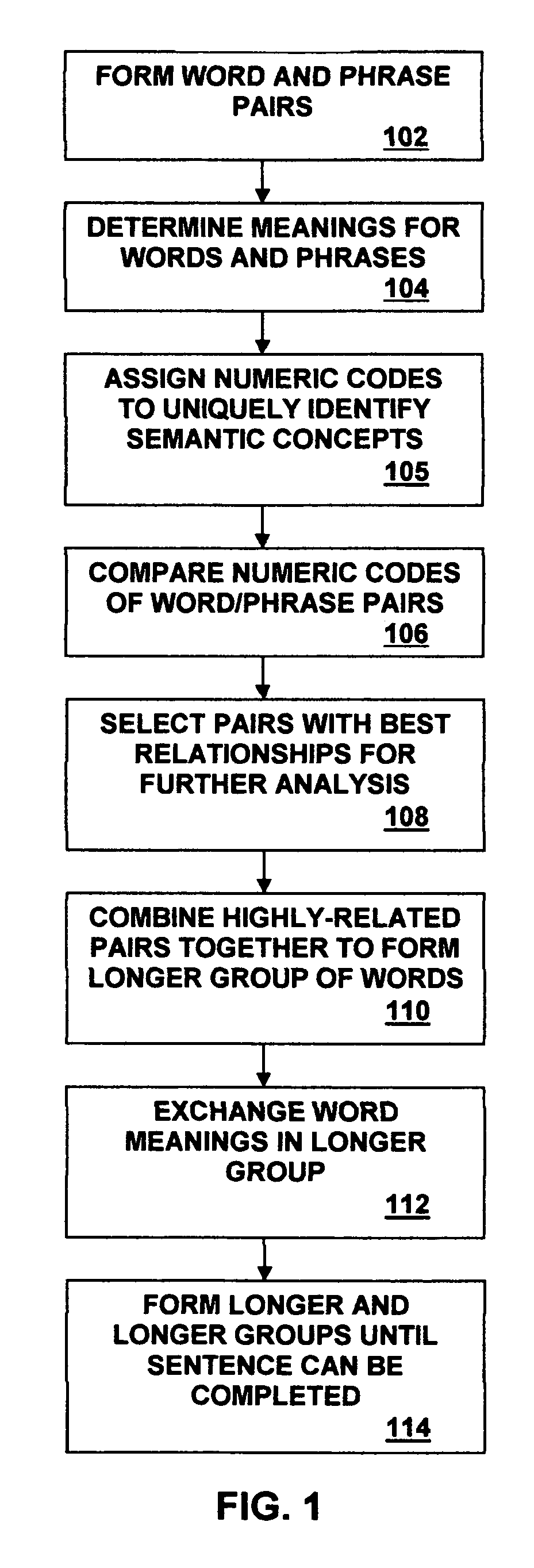Relationship analysis system and method for semantic disambiguation of natural language
a relationship analysis and natural language technology, applied in the field of relationship analysis for semantic disambiguation of natural language, can solve the problems of linguistic analysis, no uniformity, ambiguous sentences and therefore inability to understand,
- Summary
- Abstract
- Description
- Claims
- Application Information
AI Technical Summary
Benefits of technology
Problems solved by technology
Method used
Image
Examples
Embodiment Construction
[0081]Referring now to the drawings, wherein like reference numerals designate identical or corresponding parts throughout the several views, and more particularly to FIG. 1 thereof, there is illustrated a flow chart of a relationship analysis process, according to an exemplary embodiment.
[0082]In FIG. 1, the exemplary relationship analysis process can be configured to perform language-independent semantic analysis, for example, including, at step 102, forming pairs of legitimate words and phrases in a sentence, wherein each word and / or phrase can be paired with every other word and / or phrase. A step 104, possible meanings for words and phrases can be determined. At step 105, numeric codes that uniquely identify the semantic concepts of the word and / or phrase are assigned. At step 106, the meaning of each word and / or phrase can be compared with each meaning of the other word and / or phrase in the pair by comparing the numeric codes of each word and / or phrase. At step 108, the pairs w...
PUM
 Login to View More
Login to View More Abstract
Description
Claims
Application Information
 Login to View More
Login to View More - R&D
- Intellectual Property
- Life Sciences
- Materials
- Tech Scout
- Unparalleled Data Quality
- Higher Quality Content
- 60% Fewer Hallucinations
Browse by: Latest US Patents, China's latest patents, Technical Efficacy Thesaurus, Application Domain, Technology Topic, Popular Technical Reports.
© 2025 PatSnap. All rights reserved.Legal|Privacy policy|Modern Slavery Act Transparency Statement|Sitemap|About US| Contact US: help@patsnap.com



